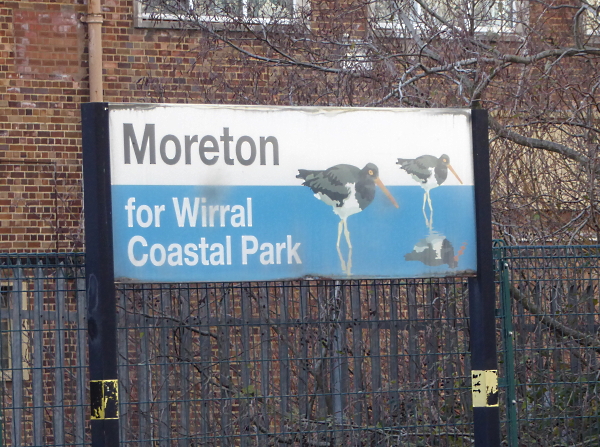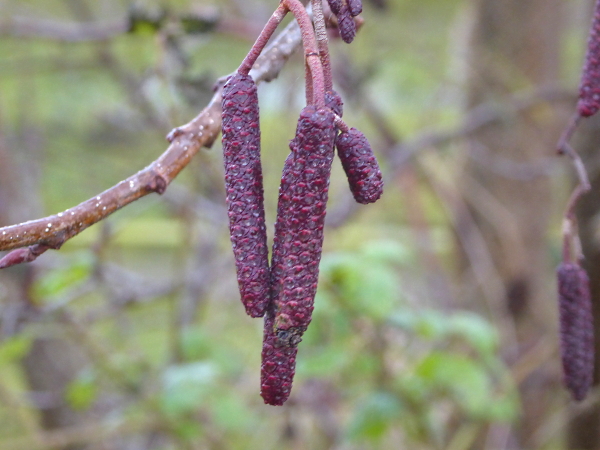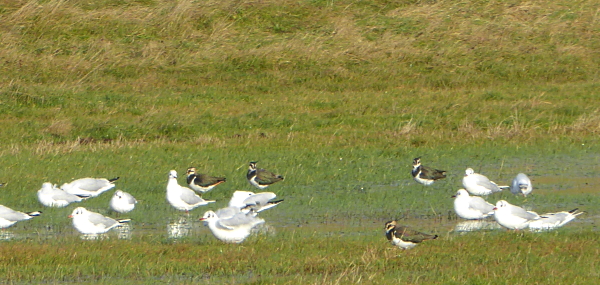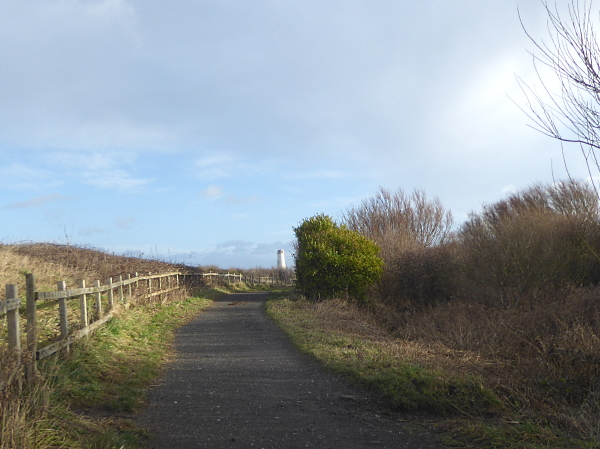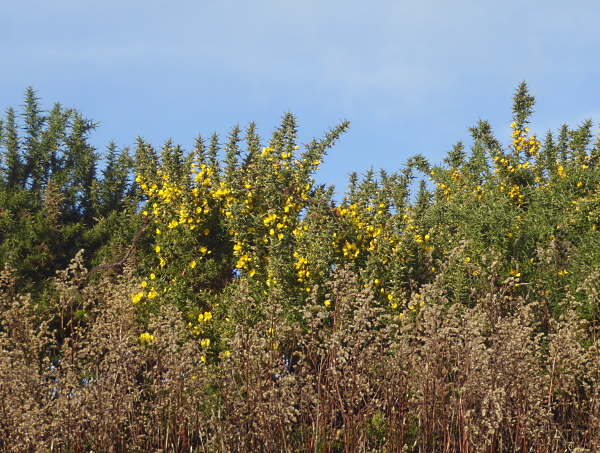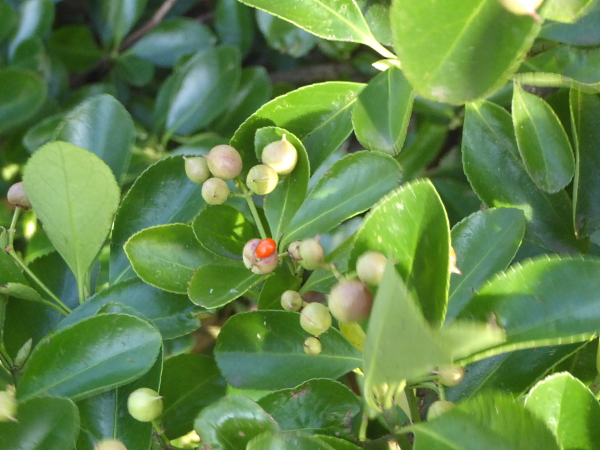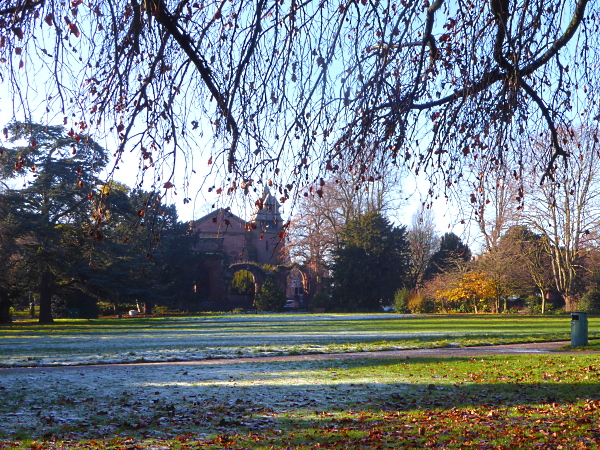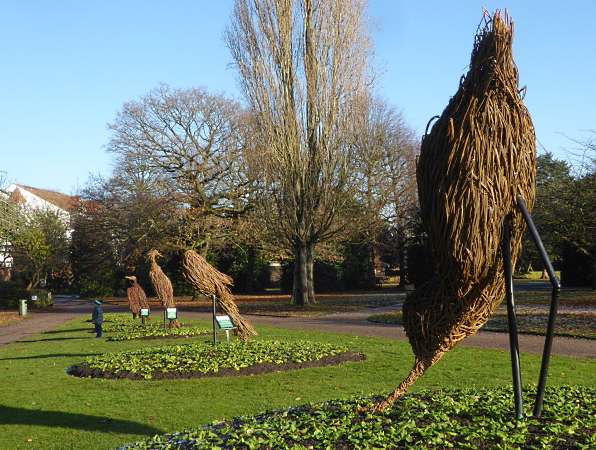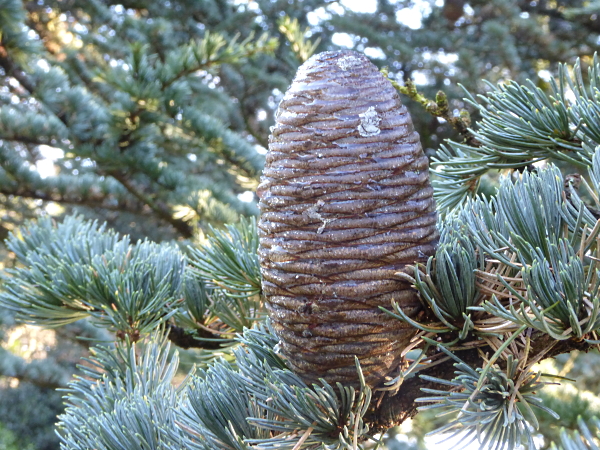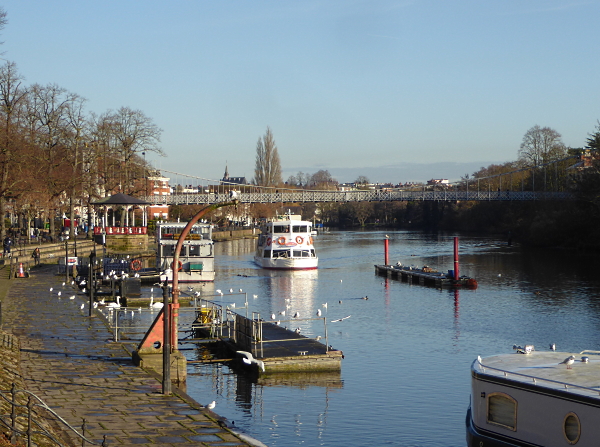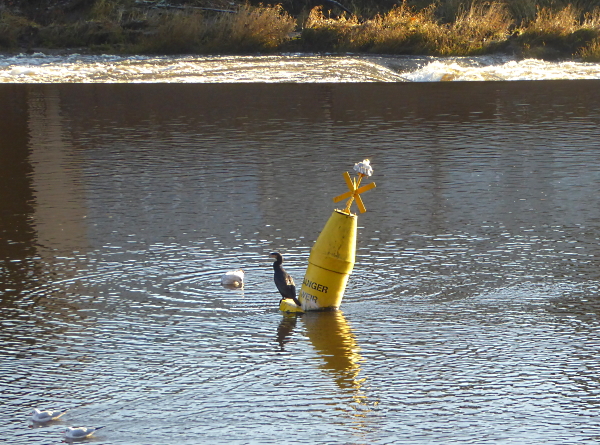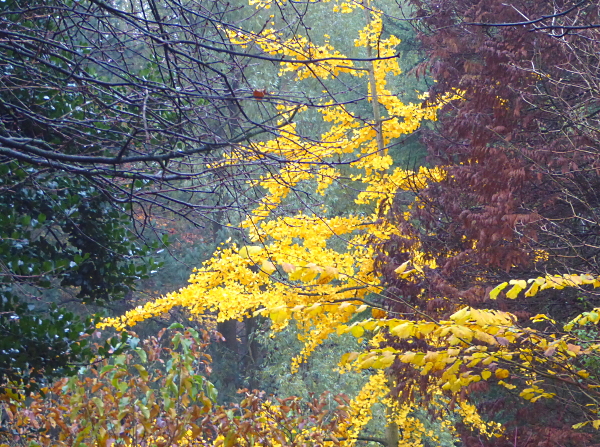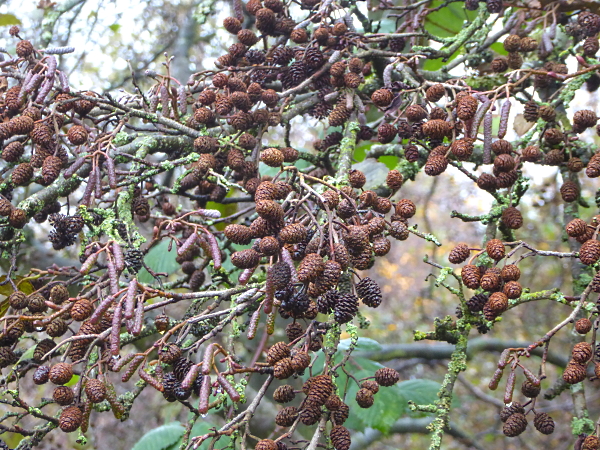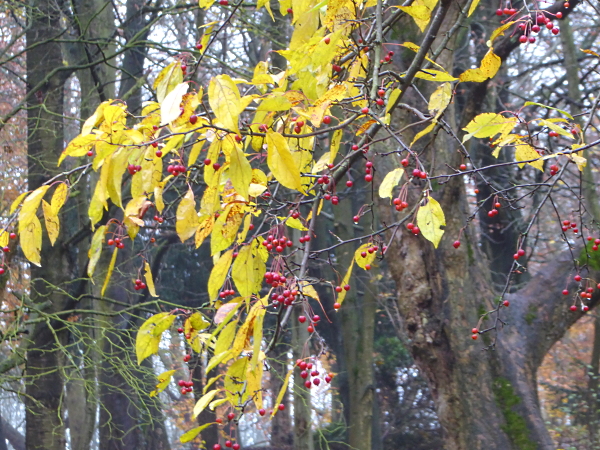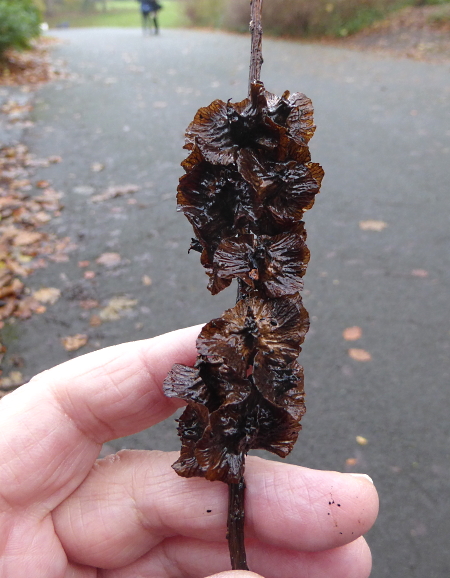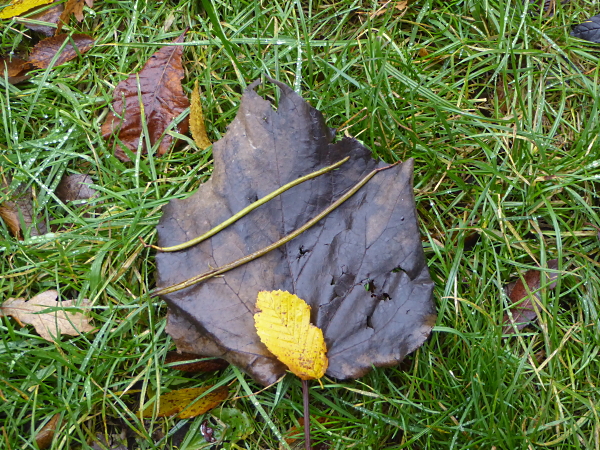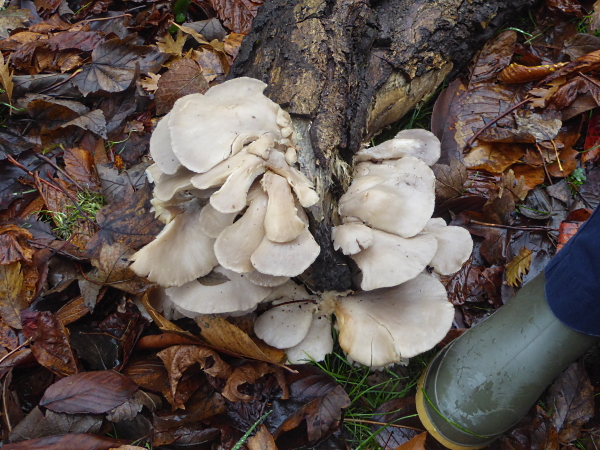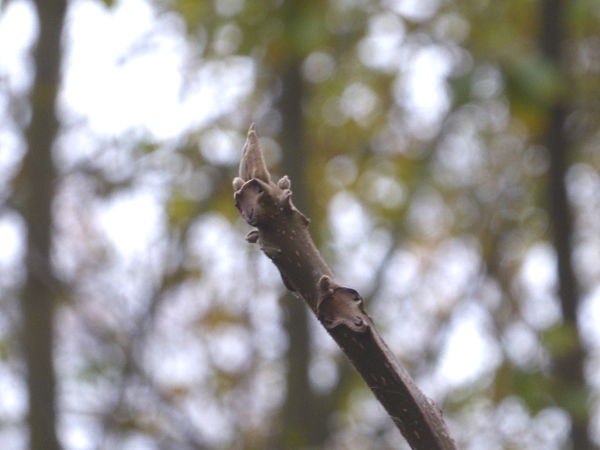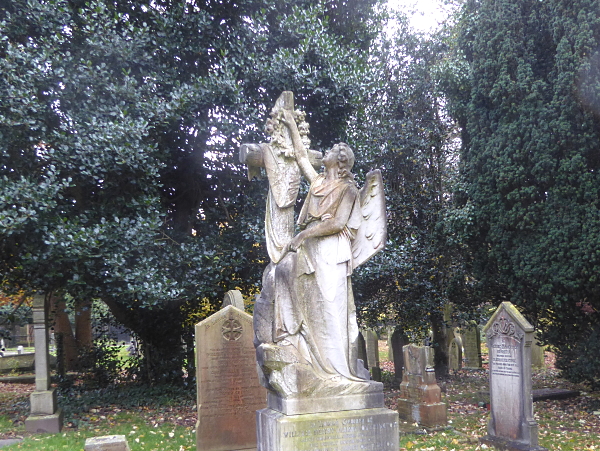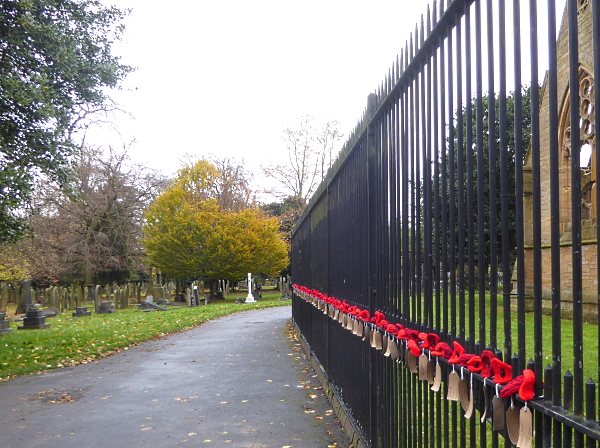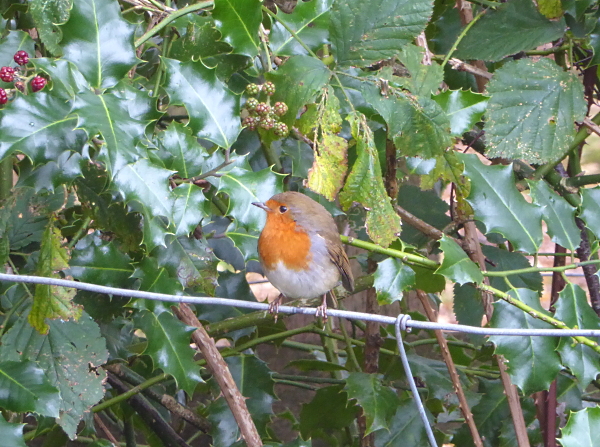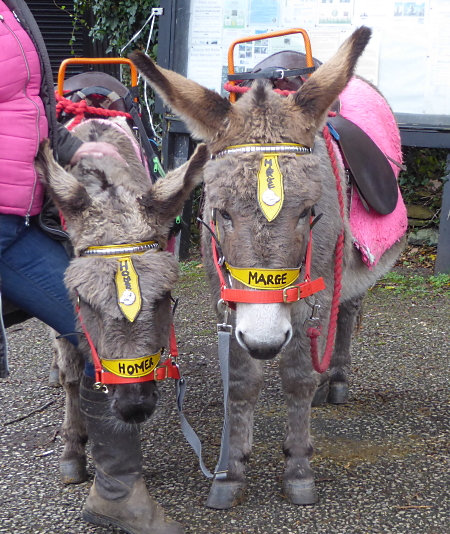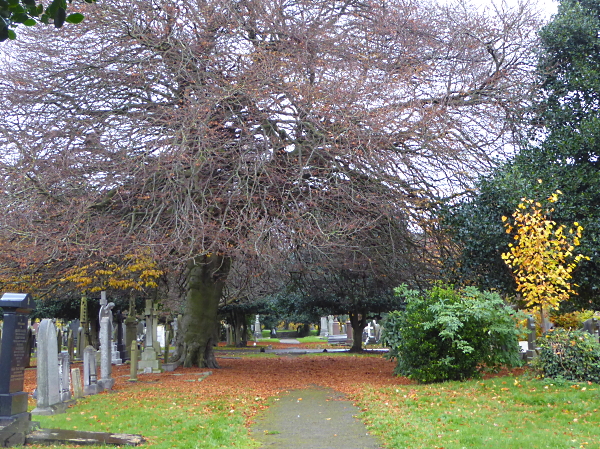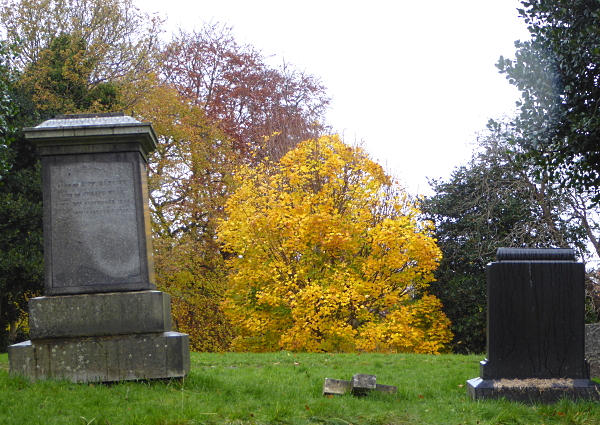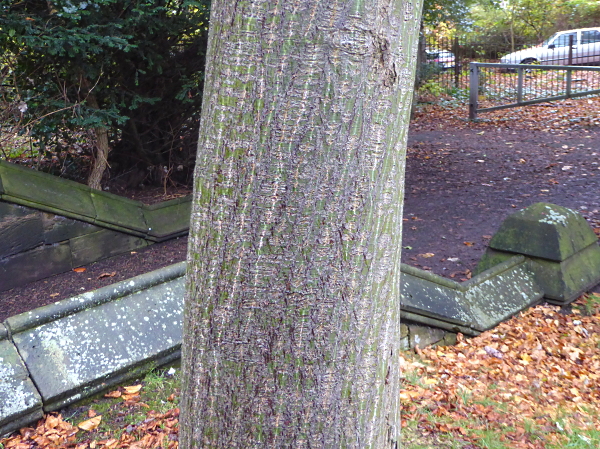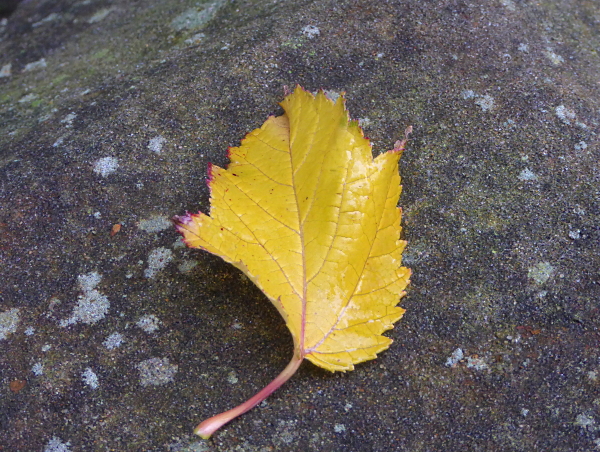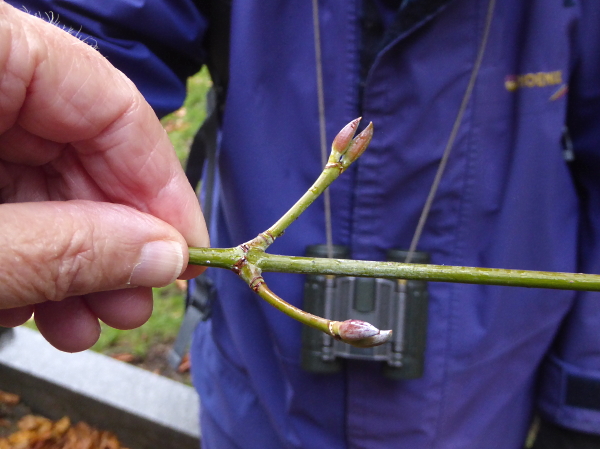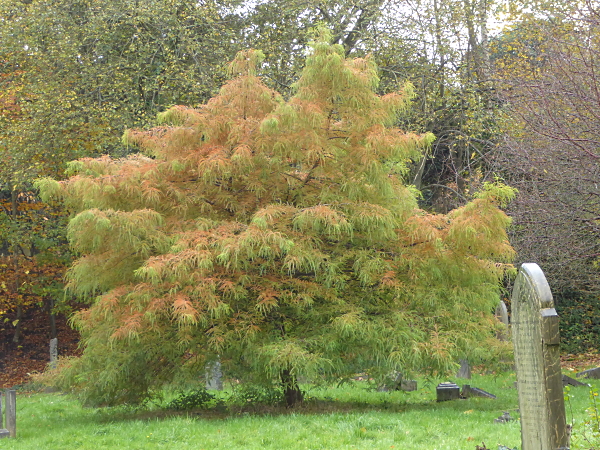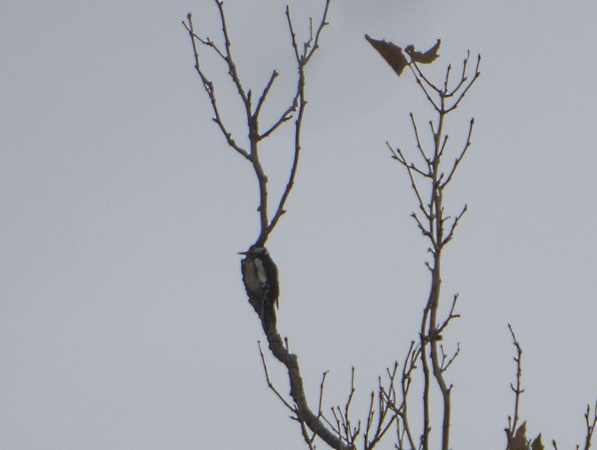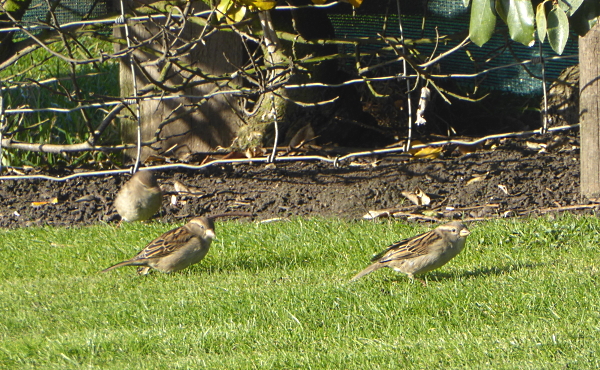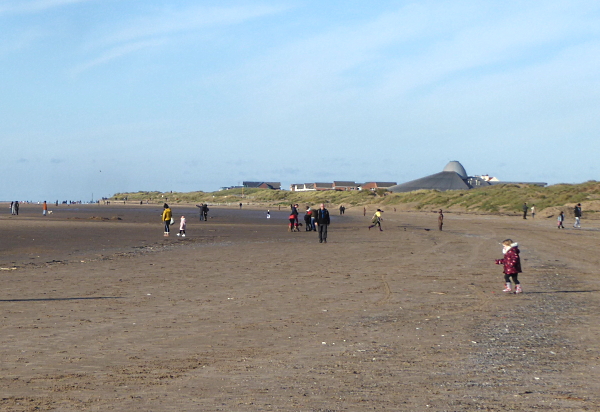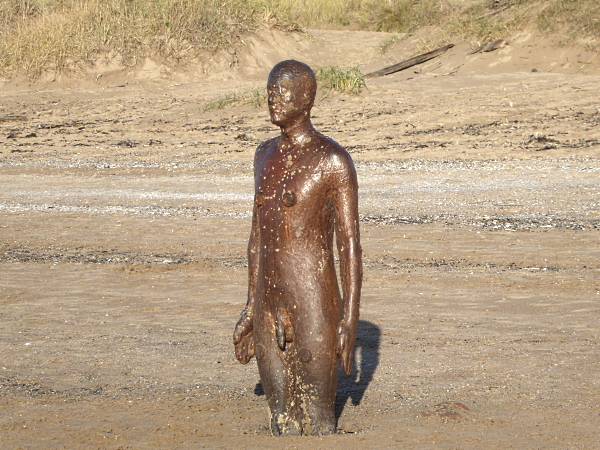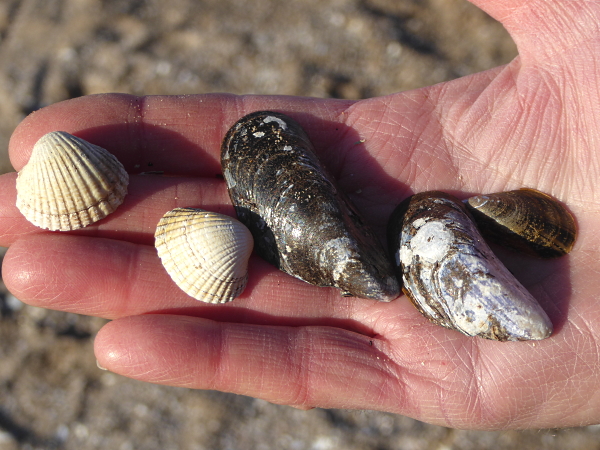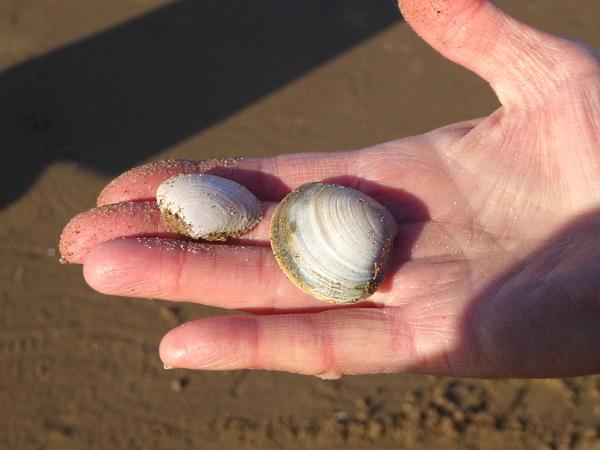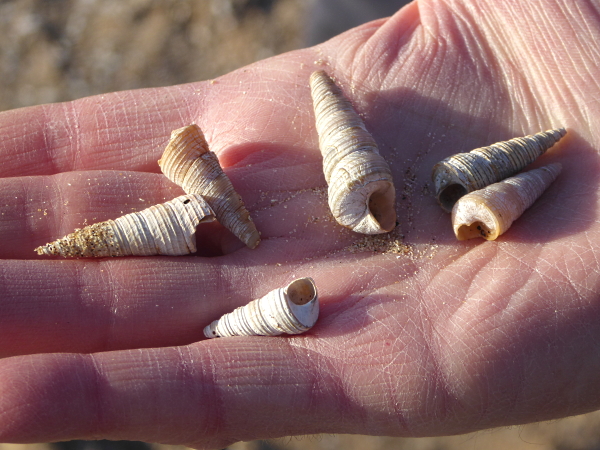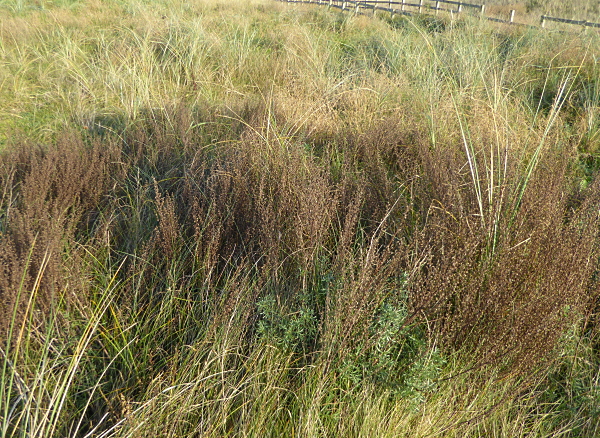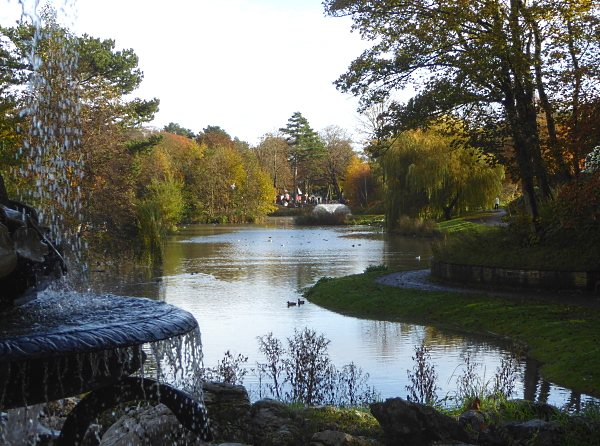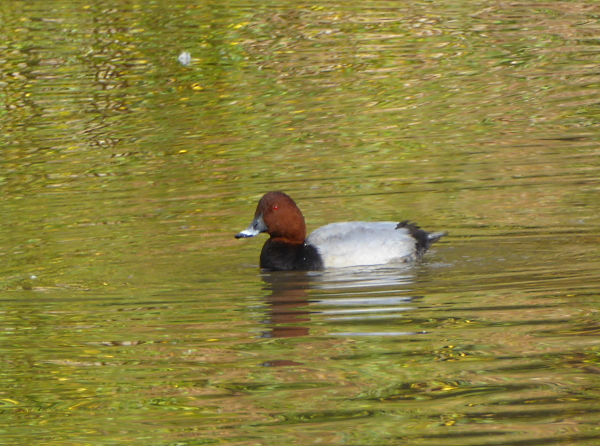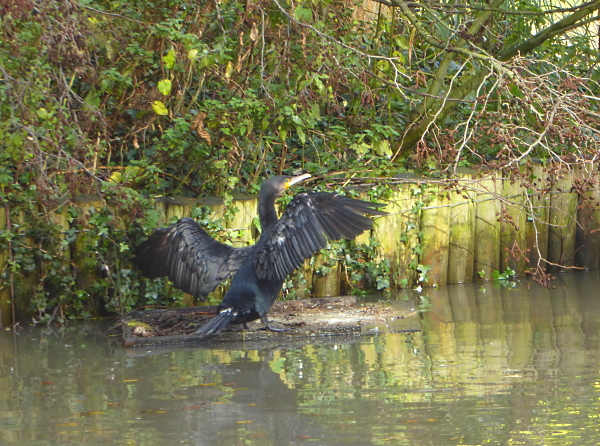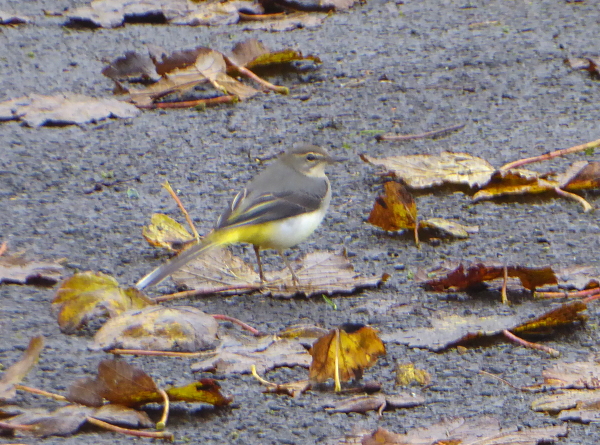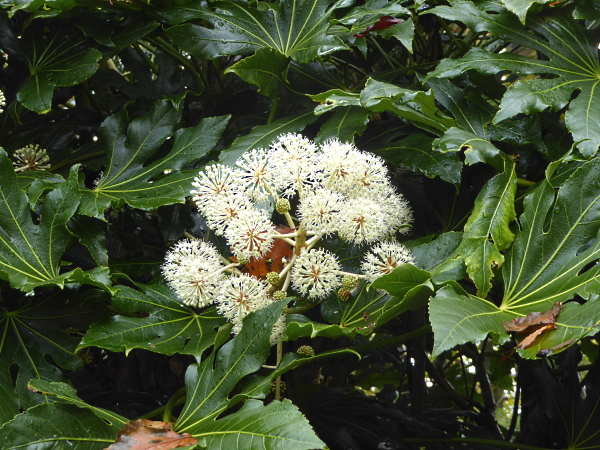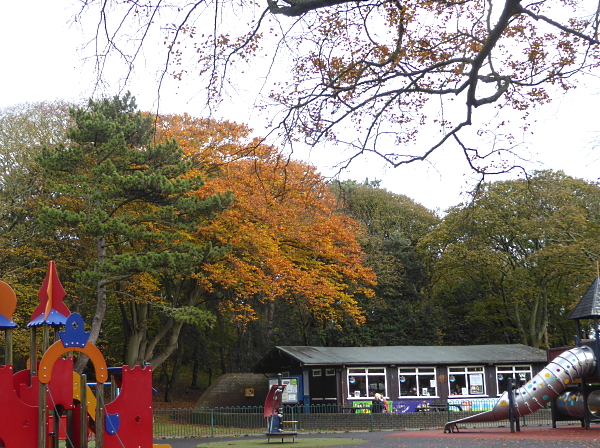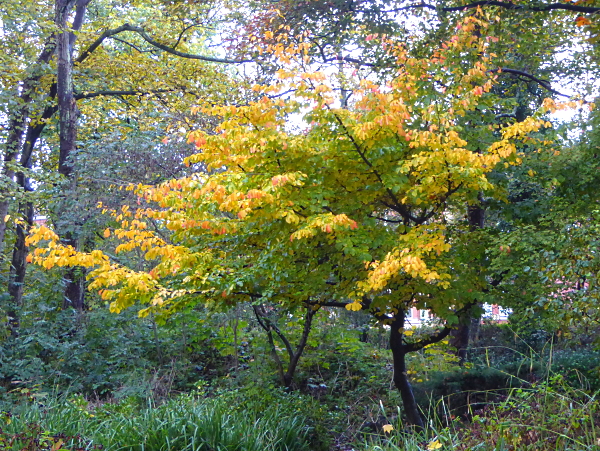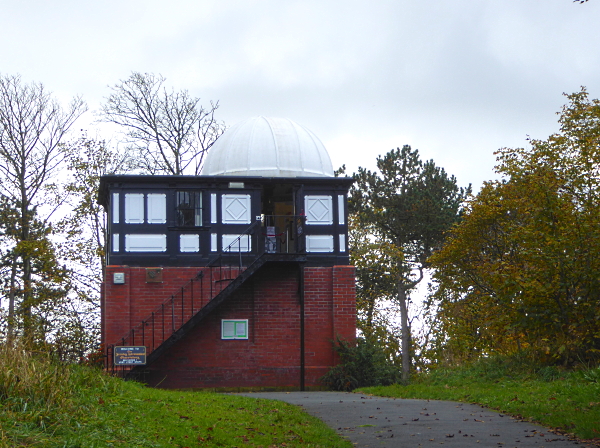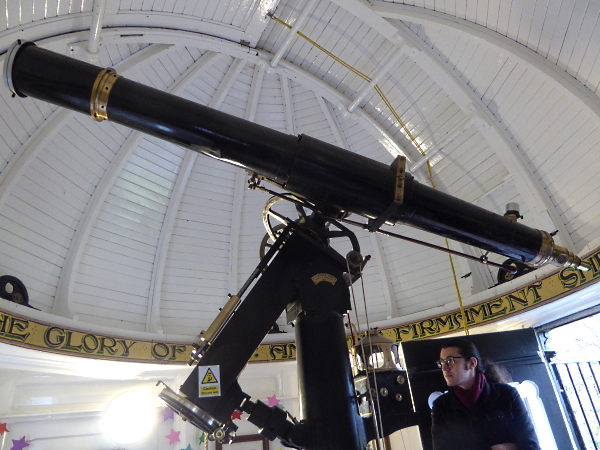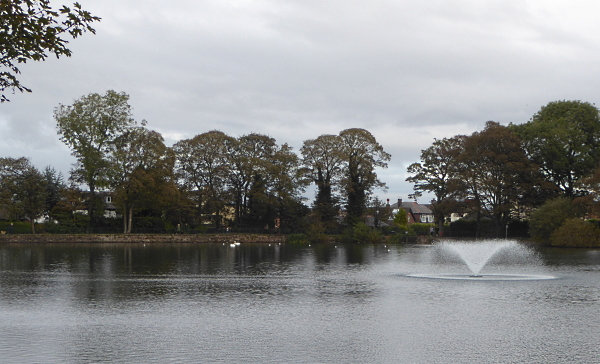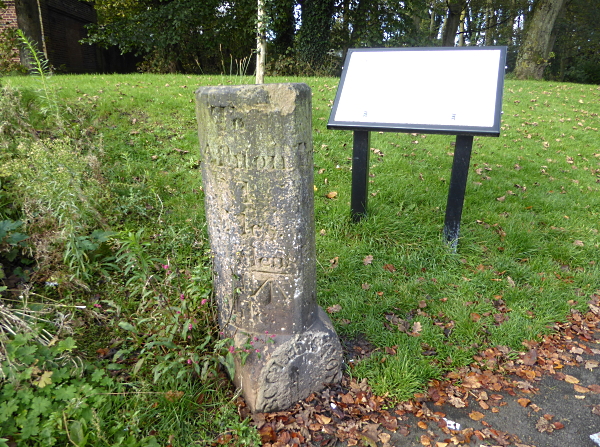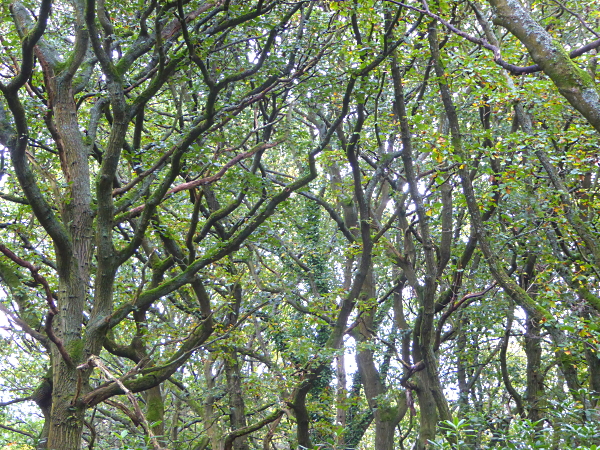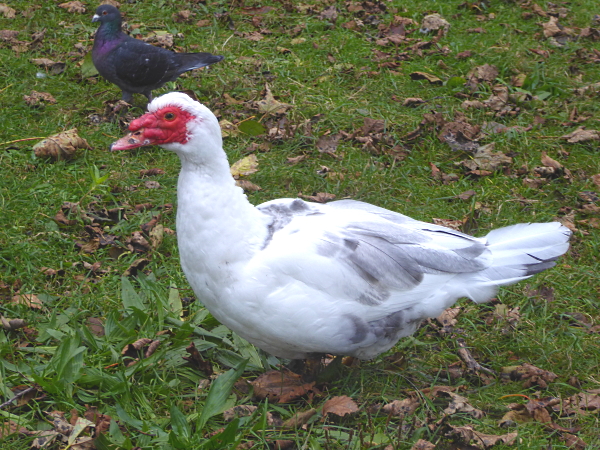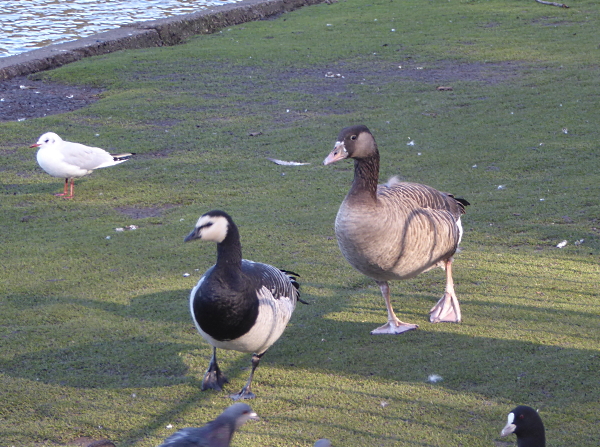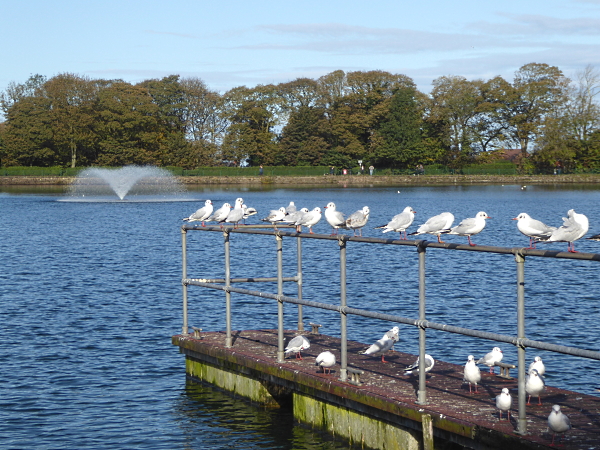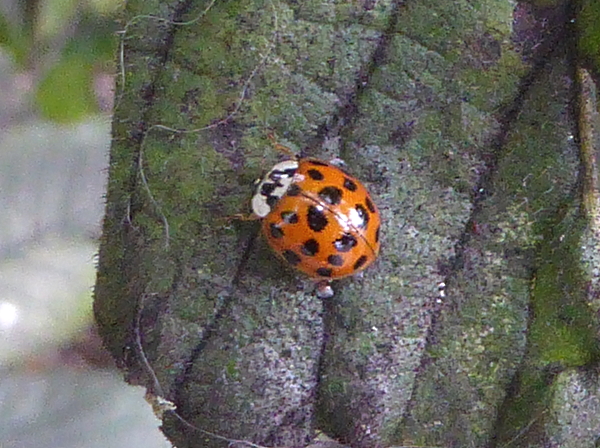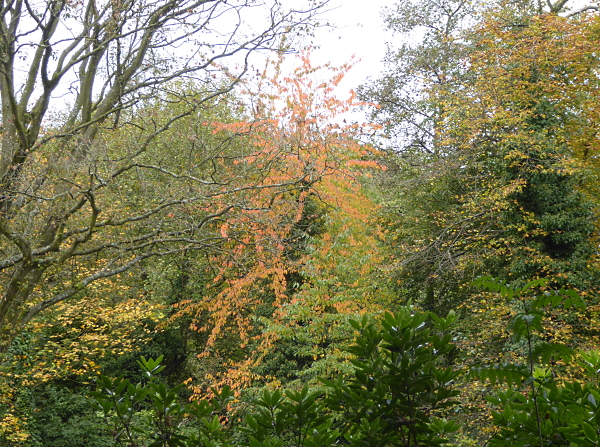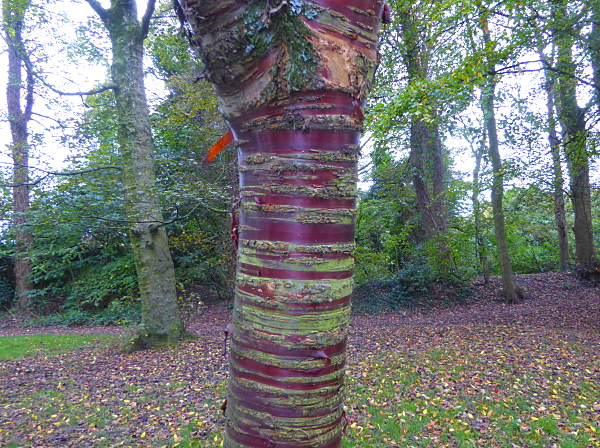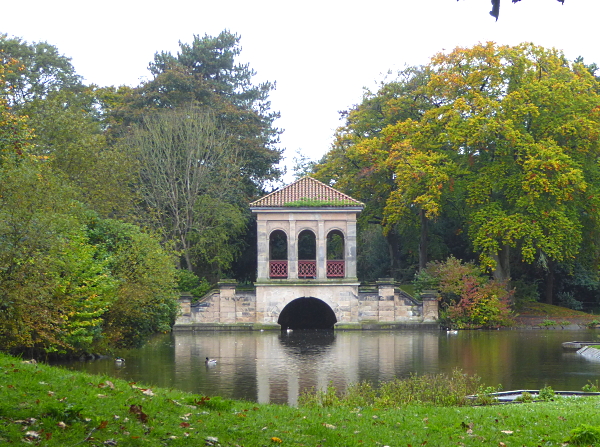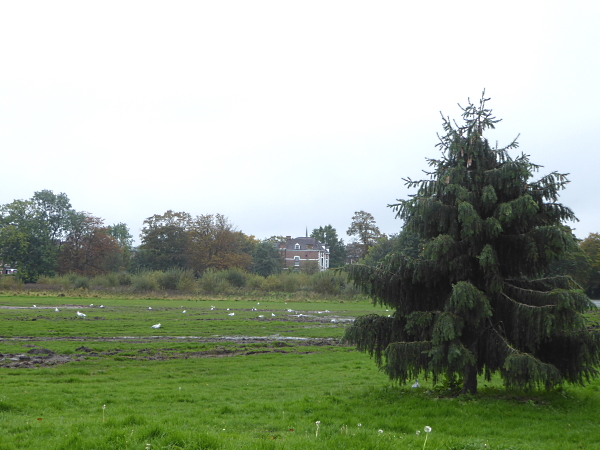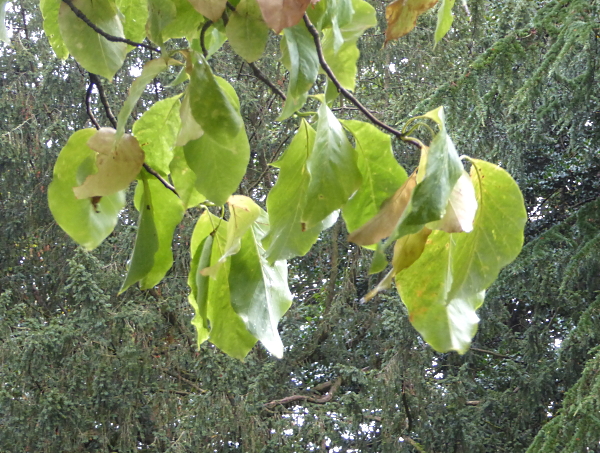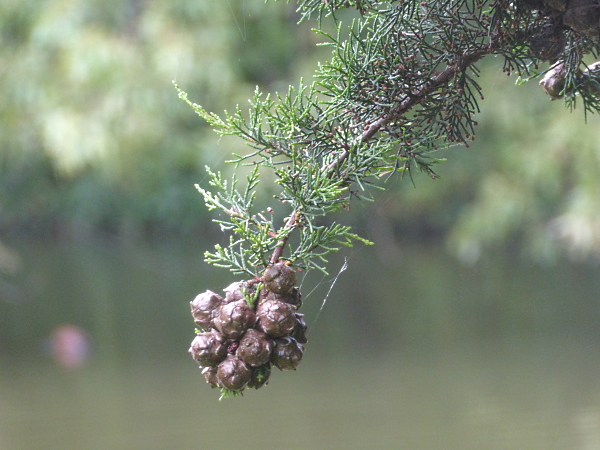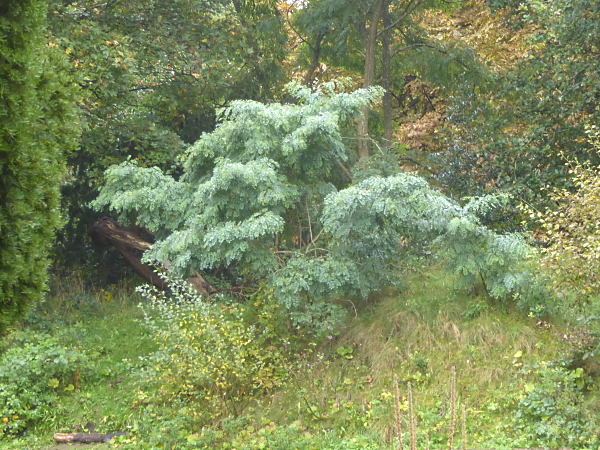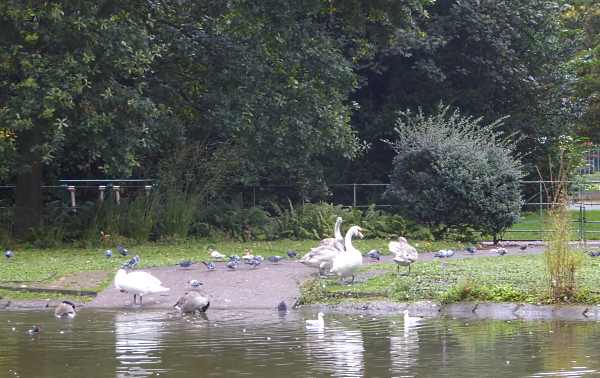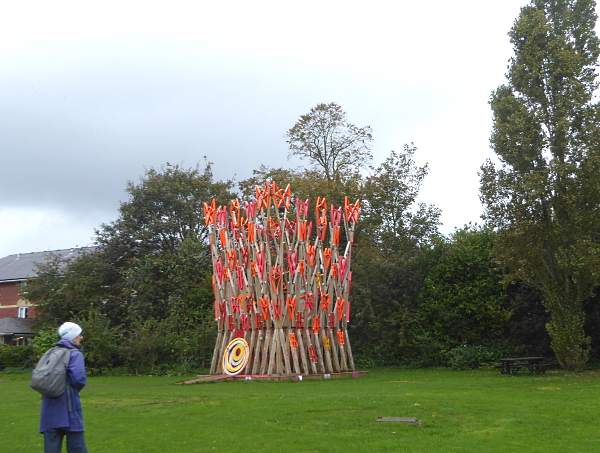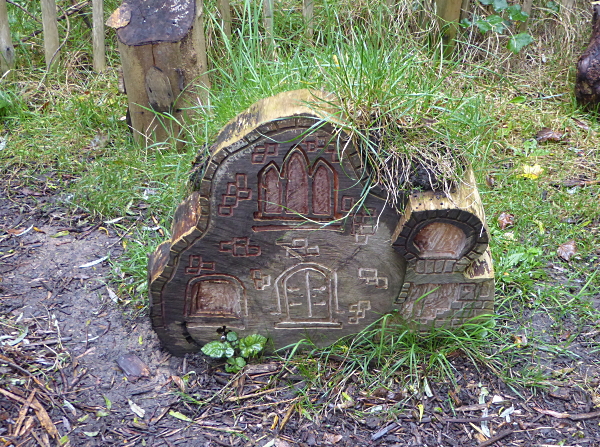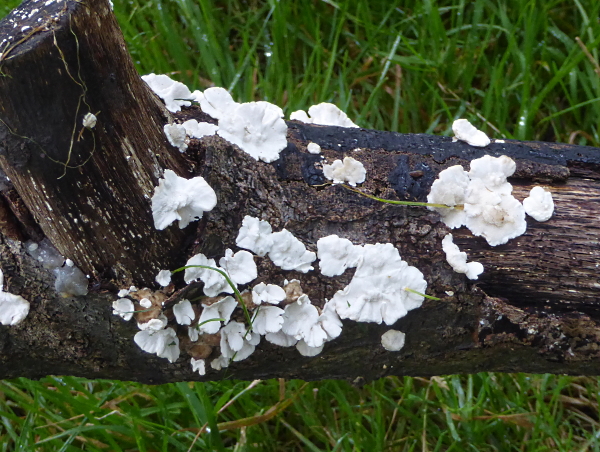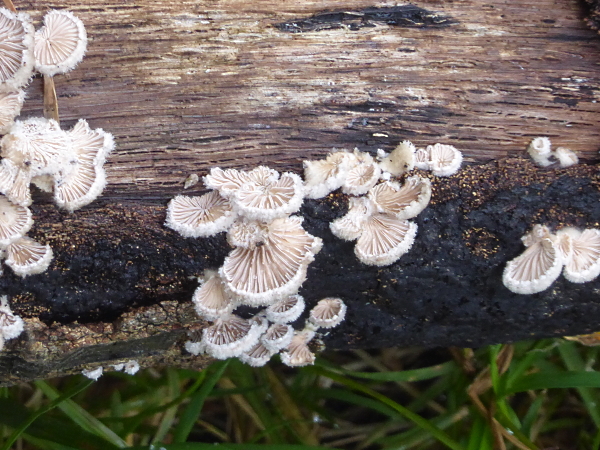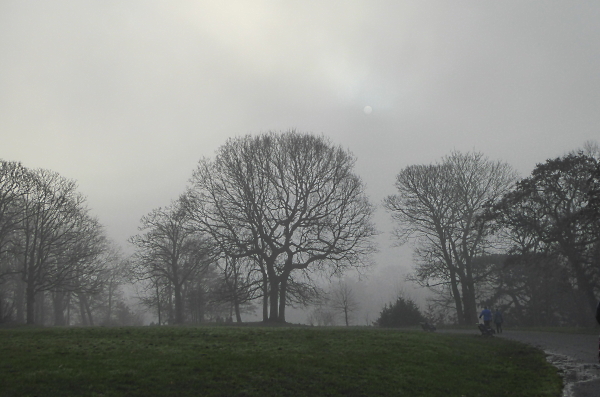
On our first Sunday walk of the new decade we were looking for signs of spring. It was a misty and frosty morning, not looking promising. However, both Blackbirds and Robins were singing from hedges as I walked to the bus. Sefton Park lake was hazy in the distance, and full of the usual birds – Canada Geese, three Mute Swans, hundreds of Black-headed Gulls, dozens of Coots and a few Moorhens, about a dozen Tufted Duck, two first-winter Herring Gulls and a handful of Little Grebes. The birds certainly FELT it was Spring. The Canada Geese were hooting and parallel swimming, the male swan was pecking at the Canada Geese, the male Coots were swimming low and threatening each other, while the females were collecting nesting material.
We were looking for winter and spring flowers, although we discounted the Gorse. Near the Eros fountain there is a Witch Hazel which I take a picture of nearly every year, and it was particularly splendid this year.
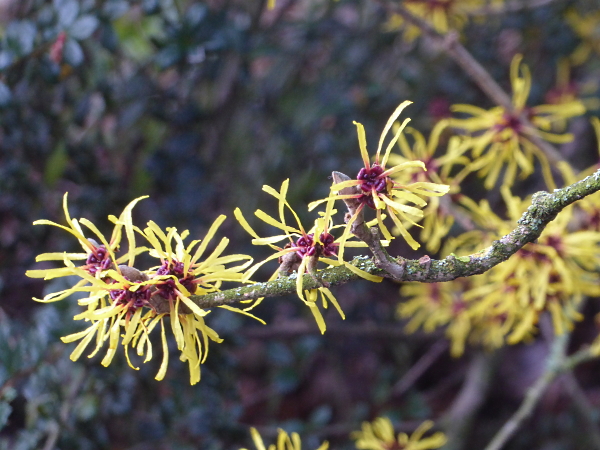
Right next to it was a low evergreen shrub with leaves like Privet, but a bit bigger, which had white flowers and black berries. My friend Google Images helped me identify it as Sweet Box or Christmas Box Sarcococca confusa. It is said to smell of vanilla or honey, but we didn’t notice that.
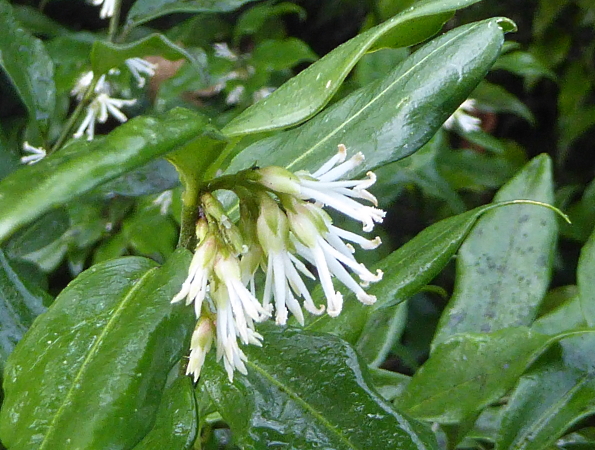
We had lunch by the old aviary, and noticed a Wren climbing the mossy sloping back wall, probing for small insects, and acting like a Wallcreeper. Some Ring-necked Parakeets flew over, squawking, while a small party of Goldfinches were feeding in amongst the Alder cones. Other birds were the ubiquitous Wood Pigeons, and a murder of Carrion Crows, gathered around a spot on a muddy bank. It wasn’t (murdered!) carrion they were after, though, just a handful of thrown seed. Lots of volunteer litter-pickers were about, doing their good work and helping to make the Park the beautiful place it is, even in winter.
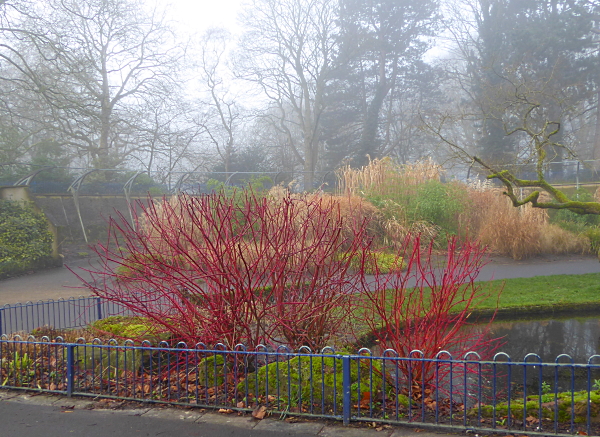
The Viburnum bodnantense near the café, which was savagely pruned a year or two ago, is sprouting again, and putting out its winter flowers.
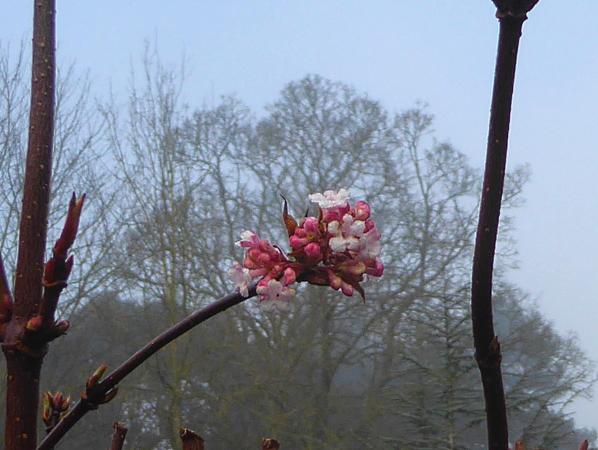
Near the Palm House the Contorted Hazel had immature catkins.
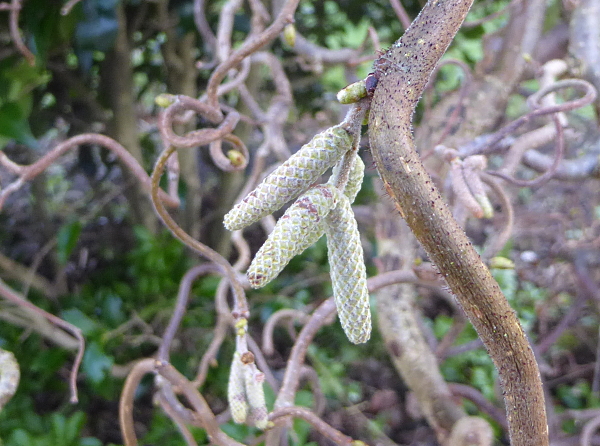
We usually come to the park on the first walk of the year because it is the RSPB’s day for stimulating interest in next week’s Big Garden Birdwatch. This year’s children’s activity was embedding black sunflower seeds in apples, to make hanging bird feeders.
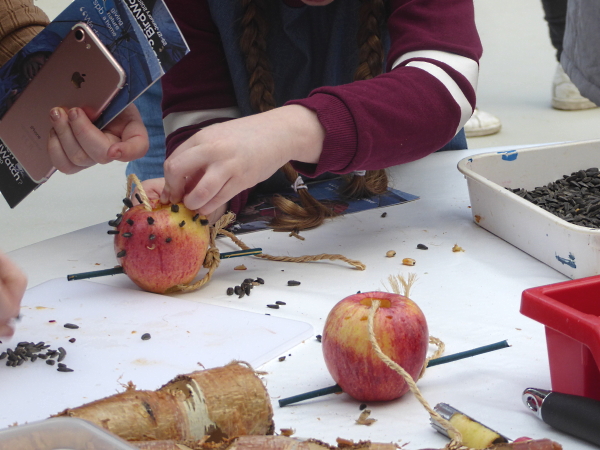
I was also taken with the picture on one of their tablecloths – a hedgehog outline full of woodland.
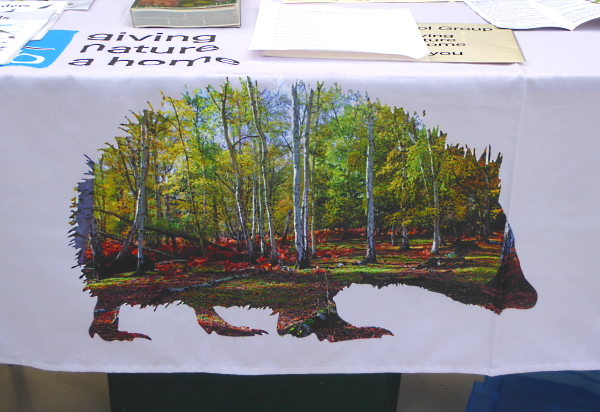
They have some unusual trees inside the Palm House. Last year I discovered a rare Norfolk Island Pine, and today we found a Coffee bush Coffea canephora, a “Robusta’ variety from Africa, bearing loads of berries. The raw green coffee beans are inside the berries, but they don’t smell of anything until they are roasted.
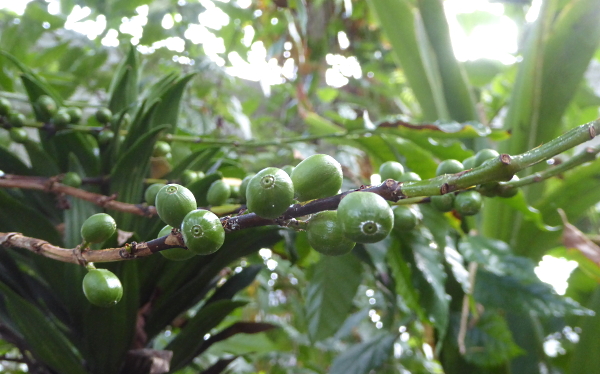
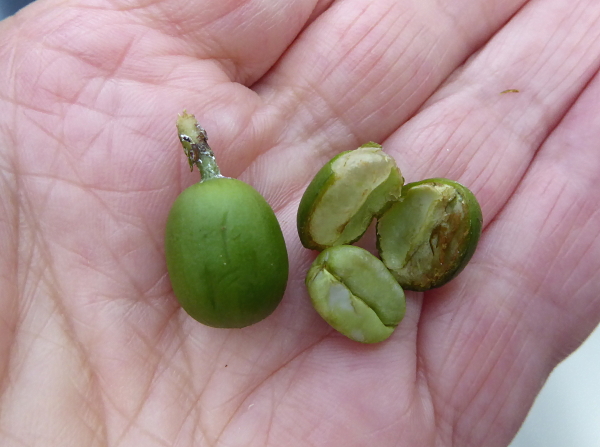
Outside, a Nuthatch was visiting the bird tables. In the Dell was one small clump of Snowdrops just about to bloom. The Persian Ironwood tree, another early bloomer, was showing off its small crimson flowers, about 1 cm (half an inch) across.
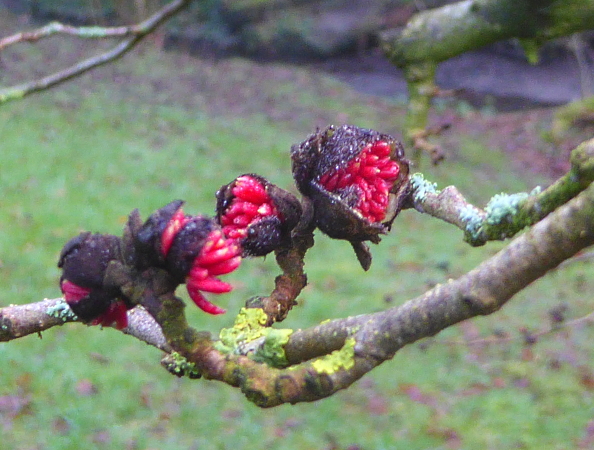
As I neared home in Crosby I was stunned by this glorious fiery sunset.

Public transport details: Bus 82C from Elliot Street at 10.10 arriving Aigburth Road opp Ashbourne Road at 10.30. Returned on the 82 bus from Aigburth Road / Jericho Lane at 2.40, arriving Liverpool ONE bus station at 2.55.

